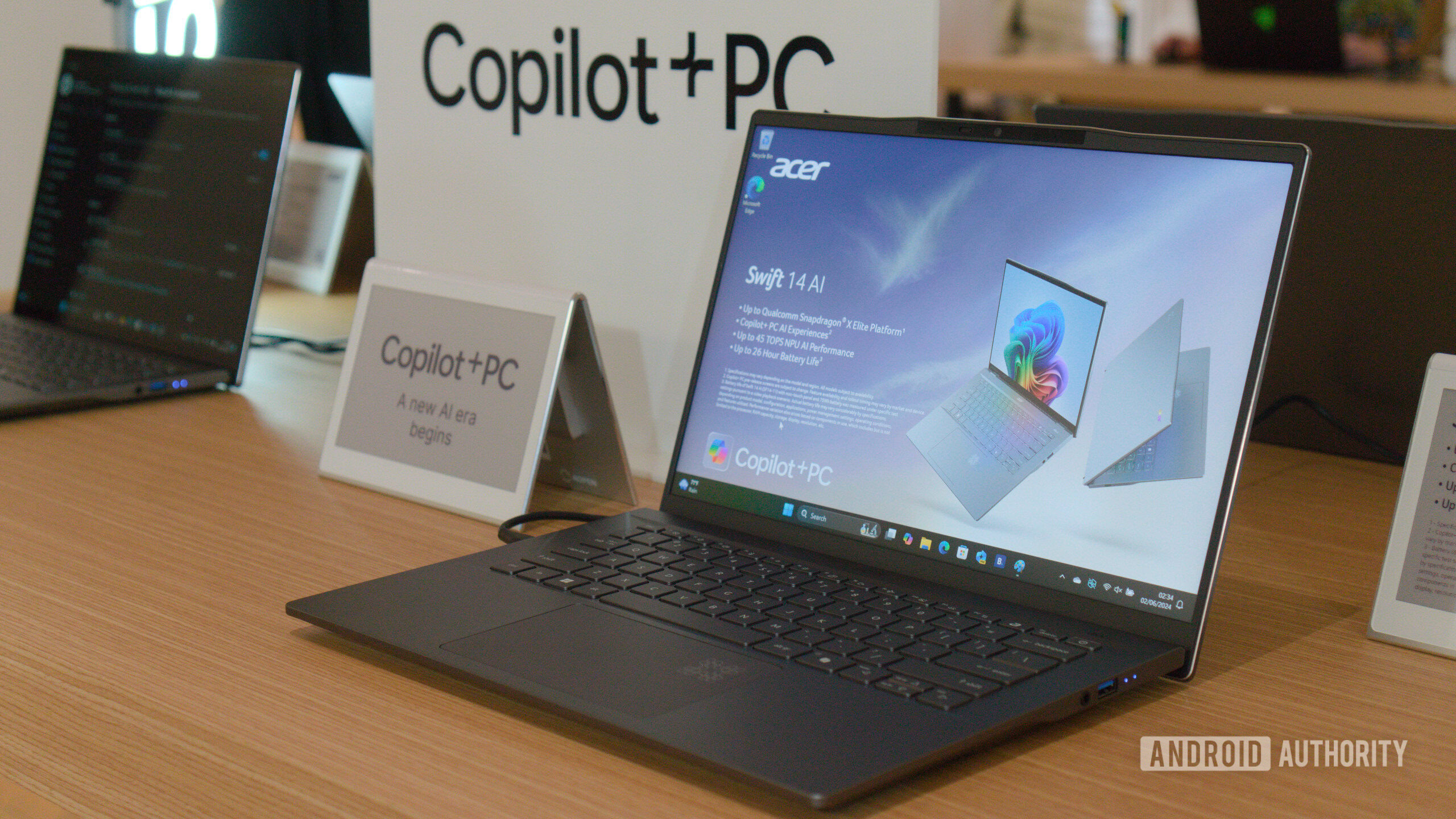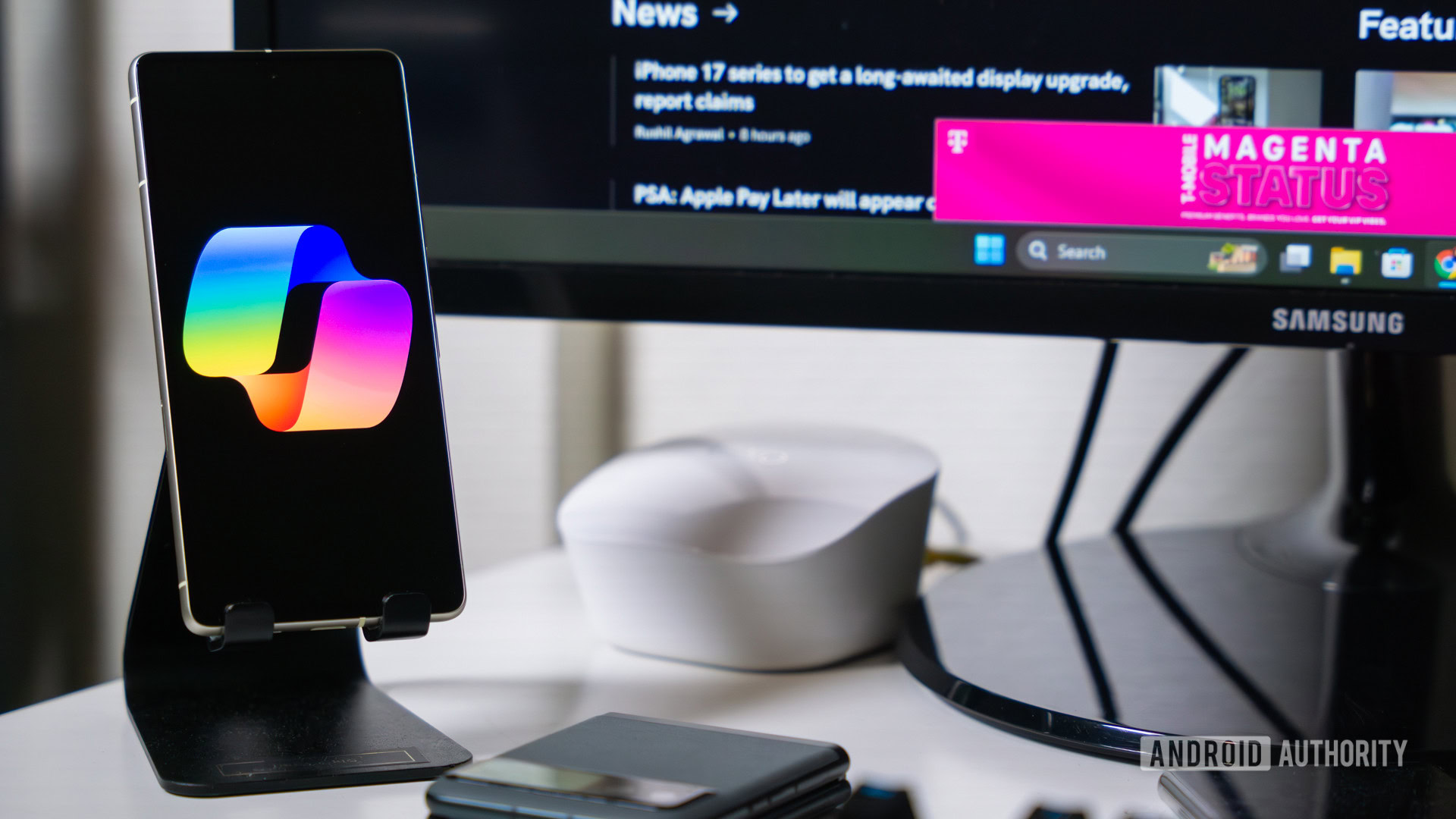Affiliate links on Android Authority may earn us a commission. Learn more.
Windows is at a crossroads, Microsoft has to decide if it wants to be more like Apple or Android
Published onJune 8, 2024
Microsoft’s Windows has just arrived at a crossroads. The status quo is being challenged by a mainstream move into the Arm architecture and a heavy push for AI as a major feature of Microsoft’s software ecosystem. But while these Copilot Plus laptop features sound exciting, our admittedly short hands-on with Recall suggests many are only skin deep. What Windows really needs to maximize the potential of this pivotal shift is a more substantial software refresh. Yes, those control panel/settings duplications are already well documented (and should be fixed); what I’m talking about is a more fundamental revamp of the core focus of the Windows OS. About the level of what Microsoft wanted to do with Windows 8, only much better and suited to next-gen devices that consumers actually want.
The problem is that such a move could fundamentally shift Windows to a more walled-garden Apple-style approach rather than the (mostly) Android-esque openness that has fostered a platform diverse enough to cater to both gamers and professionals at once. I’m not even sure it’s something I really want, but sitting on the fence isn’t going to move the platform forward.
Move to Arm or don’t, but don’t hedge

The issue all stems from these Copilot Plus PCs (and the Windows on Arm initiative in general), which have Windows caught half-in, half-out. On the one hand, it wants to tout the battery life, networking, and AI benefits of Arm-based silicon. However, that leaves swathes of existing software (including decades of PC games) relying on an emulation layer to reap those benefits. The pool of native-Arm software for Windows continues to grow, but that’s no solace for discontinued apps and, ultimately, supporting two architectures (plus there’s Mac, too!) is a burden on developers, particularly smaller ones.
Trading app support and performance for battery life isn’t an easy decision, but failing to commit to a side means customers will have to weigh up these pros and cons every time they make a purchase. Does my favorite game run well on Arm? Will this device have better or worse battery life for Photoshop-ing on the road? That’s a headache we could all do without.
Microsoft wants us to believe in the benefits of Arm and AI, but they're only for ultra-premium customers (for now).
Apple ripped the bandaid off in a single move, ditching Intel for its Arm-based custom Apple M series processors that now span its entire computing portfolio. However, that worked because of the tighter control Apple exerts over hardware and, to a lesser extent, its software partners. The ecosystem was strong-armed into the move that would have taken much longer to transition organically.
Microsoft’s Windows relies much more heavily on third parties for both, leaving it caught struggling to please everyone. If Arm-based laptops are where Microsoft thinks the future of Windows lies (which wouldn’t be a bad call), it could take steps to push Arm as the default architecture rather than the niche. However, that will come at the expense of its partners in AMD and Intel and PC manufacturers who want to stick with x64 CPUs, particularly for the budget and enterprise spaces. There’s no easy answer here.
AI for me but not for thee

Putting aside the Arm vs x64 debate, the heavy AI focus with Copilot puts Microsoft in a bind on the software front too. Gloss over those alarming Recall privacy concerns; the experience doesn’t feel all too brilliant at the moment. Part of that problem is simply the early nature of some features, but some of that is a symptom of surface-level integration. I’d be much more interested in an AI assistant that could search and organize my documents, help me compose text in any application, and all on-device without a pesky subscription. If I invest in a new chip with an NPU, it better do plenty that doesn’t require an internet connection.
We’ve hit another “if,” but if Microsoft wants to leverage AI more deeply, it’ll have to bake that into the core OS further down, which means mandating hardware support (uh oh, we’re back here again!). Copilot Plus PCs already require 45 TOPS of AI performance, which excludes 2023 Intel and AMD chips and likely means these extra AI tools won’t make their way down to the budget segment for a considerable length of time. Especially given that TOPS demands will grow if we want more powerful AI on-device.
Are you excited to try out Microsoft Recall?
Is Microsoft embarking on a two-tiered Windows journey, one for those with AI silicon and another for those without? It’s hard to see how it avoids that situation unless it wants to repeat Windows 11’s controversial Trusted Platform Module (TPM) 2.0 CPU requirement. Copilot as a meek, optional add-on, is an option, of course, but future versions of Windows with AI that are far more deeply embedded could well have strict minimum requirements for the NPU to make the most of the platform. And while we’re at it, why not shift the whole platform over to an Arm-first approach to lock in those battery benefits, too?
The Windows formula is, frankly, stale. Winning over premium consumers, the creative industry, and techy-trend followers (aka MacBook owners) requires bold re-envisioning. Whether or not this is desirable circles back to that Apple vs Android — closed vs open — crossroads.
The choice: does Microsoft force through new features to reinvigorate Windows or stick to being the boring workhorse?
If battery life and AI features can elevate the platform to a much higher level, then setting out stricter requirements (Microsoft doesn’t have to approach Apple levels of vice-like grip) will almost certainly be necessary to make these a core part of the experience and push Windows into new territory.
The drawback would be turning its back on the wide-ranging support that has helped Windows endure a prolonged period of widespread use despite the lack of exciting developments. Ultimately, Windows is a workhorse for enterprise users, gamers, and more, who prefer flexibility in choice for both hardware and software rather than having features rammed down their throats. Windows has irked various corners of its user base with many of its recent changes that push Edge, Copilot, ads, and more onto users who just want an OS that leaves them alone. Coercing a move to Arm and Copilot would be the final straw that pushes a few more users somewhere else (I’d say Linux, but let’s be real).
Perhaps a two-tier Windows experience is the way to go — AI bells and whistles and those Arm-specific benefits reserved for Microsoft’s Surface line and premium products from select partners. The rest of us and enterprise consumers will still want and rely on that more familiar, stripped-down Windows experience that keeps things relatively simple. However, we’ve seen similar ideas tried and failed in the past: Windows RT (its first attempt at Arm) and Windows 10S (Windows app store-only) are both better left unspoken about. Things have changed since then, so I guess we’re about to find out whether Microsoft can successfully cater to two crowds at once once more.